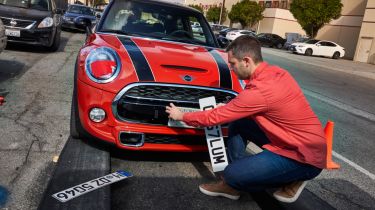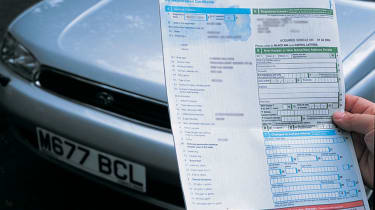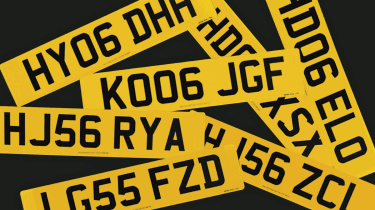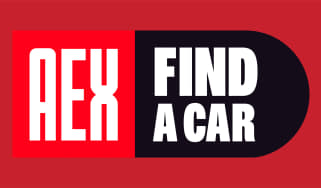Transferring a private number plate: a guide to moving registration plates from car to car online
Need to know how to transfer a private number plate between vehicles? Our step-by-step guide breaks it down

Transferring a private number plate is a crucial step if you’re buying or selling a car and are lucky enough to own a personalised registration number. If you want your new purchase to wear your prestige plate, you’ll need to transfer it in order to replace the car’s old number. If you’re selling a car that currently wears your private plate, you’ll need to transfer it off of the vehicle, otherwise you’ll lose it.
If you’re looking to sell your car but keep your private number plate, sell the private number plate itself or move a personalised registration onto another vehicle, there are specific rules you need to follow. Thankfully, the process of transferring a private number plate is fairly straightforward, and our guide is here to explain everything you need to know.
How to transfer a private number plate to another car
As is the case with driving licences and VED road tax, vehicle registration is overseen by the Driver and Vehicle Licensing Agency (DVLA). If you want to transfer a number plate between cars, you’ll need to fill in a V317 form. This is also known as a car-to-car transfer.
To transfer a private number plate from one car to another, you’ll need the V5C registration document for both vehicles, as well as valid MoT certificates for both cars if they are more than three years old. The current fee for transferring a private number plate from one car to another is £80.
You can fill out a paper version of the form or complete the process online, but before you begin there’s a list of requirements you need to meet:
- The new vehicle needs to exist. You might think this goes without saying, but you can’t change the number plate on a car the DVLA has no record of.
- The vehicle must be available for inspection when needed by the DVLA and be capable of passing a roadworthiness test (an MoT, for example).
- The registration you are adding cannot make the vehicle appear younger than it is - i.e putting year specific plates on a car built before the year in question. This is designed primarily to stop unscrupulous sellers making a quick buck by fitting plates to old cars to make them look newer and sell them for an inflated price.
If these aspects are all met, then you're good to go. Simply fill out form V317 with the registration, make, model and VIN number of the car you want to remove the plate from, add your contact details in case there are any issues arising from the transfer, then fill in the details of the vehicle you want to put the registration on. It’s also worth remembering that if you have a classic or historic vehicle, you’ll also need a current MoT certificate, even if your vehicle is usually exempt from MoTs. You don't necessarily have to own the vehicle you want to put the number plate onto, either.

If you sell your car but don’t have a new one lined up yet, you can still keep hold of your cherished plate. By using the same V317 form, you can get a retention document for a fee of £80. This allows you to keep the registration for up to 10 years, so there’s no rush to affix it to a new car right away.
How to assign a private number plate to a car
Assigning a number plate to a car can be done quickly and easily online. All you need is the certificate of entitlement or certificate of retention with the registration number on it and the car's V5C registration document. Any car that's more than three years old will need a valid MoT certificate, this includes classic and historic vehicles, even if they are usually MoT exempt.
Once your application is accepted, you can start using your private number plate. Just remember to inform your insurance provider and update the information on your V5C.
How to transfer a private number plate to a new owner
If you decide you want to transfer the plate to a new owner, or if you decide to sell your private number plate, you’ll need to put it on a retention certificate first. You are then free to give or sell the number plate to the buyer of your choice. No vehicle documentation is needed until the receiver of the private plate wants to attach the registration to a vehicle.
If you decide to sell your private plate online, it is strongly suggested that you never share scans or photographs of private documents, as they might be used by people other than your intended buyer.
If the buyer has a vehicle they wish to assign the private plate to, you need to assign it to their car. Simply fill out a V778 form and include the V5C logbook, or fill out the form online.
What documents do I need to transfer a private number plate?
To make the process of transferring a private number plate smooth, having the following documents and details to hand is essential:
- Private number plate details
- Proof of identity, including current and new owners.
- Vehicle details and documents
- Transfer fee
Having these ready before you start your application will help speed up the process. Online transfers can typically be completed in a couple of days while postal transfers may take a couple of weeks.

The small print
There's plenty of small print that goes with the transfer of a number plate. The vehicle must have been taxed (or had a SORN declaration) continually for five years, and if it has been SORNed for more than five years, then it will need to be taxed. If you're thinking of transferring a number plate with a Q or QNI prefix, then stop, because these can't be transferred.
If the vehicle is sold before you apply to retain the personal plate, then you don't have the right to retain it. Also, if you don't remove the number before confirming a car's destruction to the DVLA, then you lose all rights to the plate as well.
If the vehicle is stolen, then you can apply to keep the personal plate immediately to safeguard it. But you can’t transfer it to a new car or have a V778 issued until six months after the date of the theft, or once the vehicle has been recovered. You won't get a reminder from the DVLA about this, so you'll need to remember to do it yourself.
And, of course, any personal number plates that you have made for your car must be standard issue, clearly legible and in line with the UK number plate rules. So that means no non-standard fonts, correct spacing of the letters and numbers, and not making numbers look like letters, and vice versa (5 and S, 8 and B, etc). It sounds obvious but legal details are also a requirement, so when speccing your plate make sure it has those ticked. If you've adhered to the above then you can fit your shiny new plate to your new car, and off you go.
Frequently Asked Questions
Yes, if you’ve purchased a new car you can transfer a private plate straight over from your old car. To do this you’ll need to inform the DVLA by filling in a V317 form either online or by post, and you’ll then be charged £80 to complete the transfer. You’ll also need the V5C for both cars, and they must each have a valid MOT certificate if they are more than three years old.
If you need to sell a car fast and for a great price, check out our parent company Carwow and their Sell My Car tool...
Find a car with the experts








